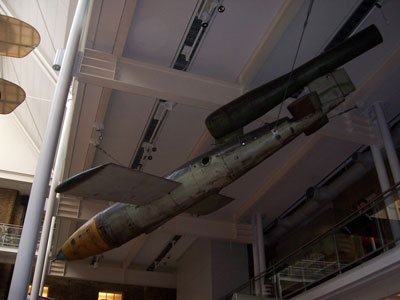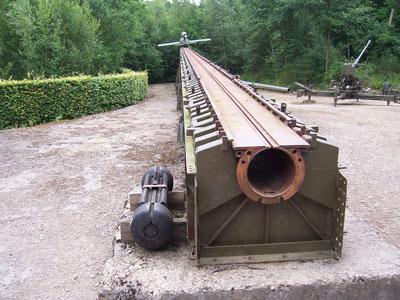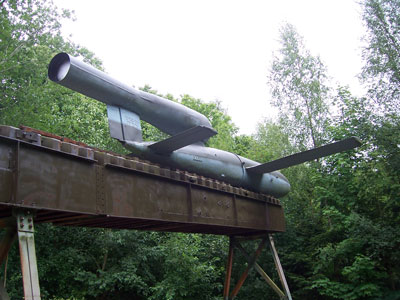
WWII: Maginot Line | Normandy | V-Weapon Sites | Arnhem
Further afield: Crete
| Home Tracing Military Ancestors Travel Advice CWGC Cemeteries Iron Harvest News Book Reviews Glossary Links Contact Me V-Weapon Sites:
 
|
The V-Weapon Sites of Northern France – A Brief HistoryHitler's indiscriminate use of "terror" weapons against civilians in England and across northern Europe between 1944 and 1945 was, largely, a direct result of the complete failure of his original war aims. Whilst much of western and eastern Europe had fallen under the Nazi yoke, Great Britain, allied to a newly militarised United States, had not come to the negotiating table. Worse, by 1944, the Allies were planning to firmly establish their armies on the Continent of Europe. Meanwhile, in the east, the Soviet Union, reinvigorated by the annihilation of the German Sixth Army at Stalingrad, and German failure at Kursk, was marshalling her vast resources for a push into Poland and the Balkans. With his enemies encircling his newly won empire and with increasingly limited conventional means to stem the tide, Hitler placed enormous faith in the capabilities of a range of new weapons. These were centred on a medium-range flying bomb, the V-1, and the world's very first ballistic missile, the V-2. The aim of these weapons was clear. The "V" stood for "Vergeltungswaffe" or "retaliation weapon" – payback in kind to the British for the RAF's devastating raids against German cities. Hitler hoped that, such would be the destruction wrought by this new aerial bombardment, British morale would be fatally weakened and, conversely, that these new "wonder weapons" would boost German civilian morale.
V-1 Flying Bomb
The V-1 Flying Bomb was nicknamed the "buzz bomb" or "doodlebug" by British civilians at the unfortunate receiving end, due to the "buzzing" of its pulse jet engine. This innovative design was developed by Fritz Gosslau of the Argus engine company, whilst the fuselage was the work of Robert Lusser of the Fieseler aircraft company. Test and evaluation of the completed prototypes was undertaken at the Peenemünde site in northern Germany in 1941-44 with the V-1 offensive against London beginning in June 1944. The V-1 was, effectively, an early type of cruise missile capable of carrying an 850 kg warhead over a distance of 150 miles. It was launched from ramps which determined the course of the missile and used an autopilot to set height and speed whilst a countdown timer armed the warhead in flight and set the rudder in neutral once zero was reached. This put the V-1 into a dive, steep enough for the fuel to be cut off. Although this fault was rectified in later models, the distinctive silence before the inevitable explosion became a distinctive and terrifying feature of this weapon during its use against London and the south-east of England.
Altogether 30,000 V-1s were manufactured, of which 10,492 were launched against England. Of these only 25% reached their primary target, London. Most were downed through British countermeasures – either shot down by anti-aircraft fire, or more likely, by RAF fighters. In fact between June and September 1944, No 150 Wing flying Typhoon Tempests (one of the few aircraft capable of catching the V-1 in a shallow dive) destroyed an incredible 638 flying bombs. Others were lost through mechanical or guidance failure. The Germans achieved a better success ratio with 1,176 air-launched variants of the missile, although 40% still failed to find their target. Altogether, the German V-1 offensive against England killed about 6,184 people and injured a further 17,981.
Despite the death and destruction of property, however, the morale of the British population as with the German people following the RAF's night raids, proved surprisingly resilient. With only rudimentary guidance equipment, the V-1 lacked the targeting accuracy to destroy the factories and research and intelligence facilities that might have seriously affected the Allies ability to fight. They had, therefore, negligible direct impact on the fighting fronts. With the Allied invasion of the Continent, in June 1944, the V-1 launch sites soon came under direct attack on the ground. As the Allies moved through France and into Belgium and England slipped out of range, V-1 operators found new targets in the recently captured port of Antwerp and the Belgian cities of Liege and Brussels. Altogether 11,892 V-1s were launched against Antwerp in an attempt to keep the port closed. Again there was widespread destruction of personal property and disruption to civic operations but the Allies remained unswerving in their war aims. Once the Rhine was crossed in March 1945 even these limited objectives fell beyond the range of the V-1. |


